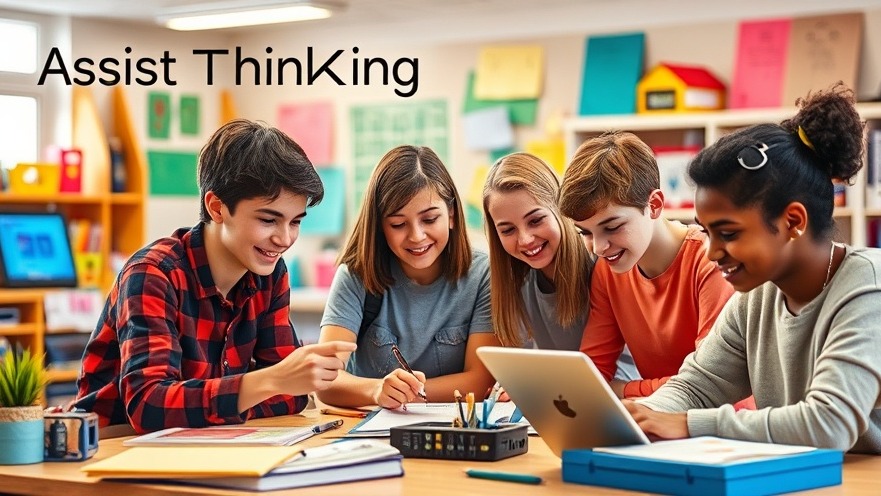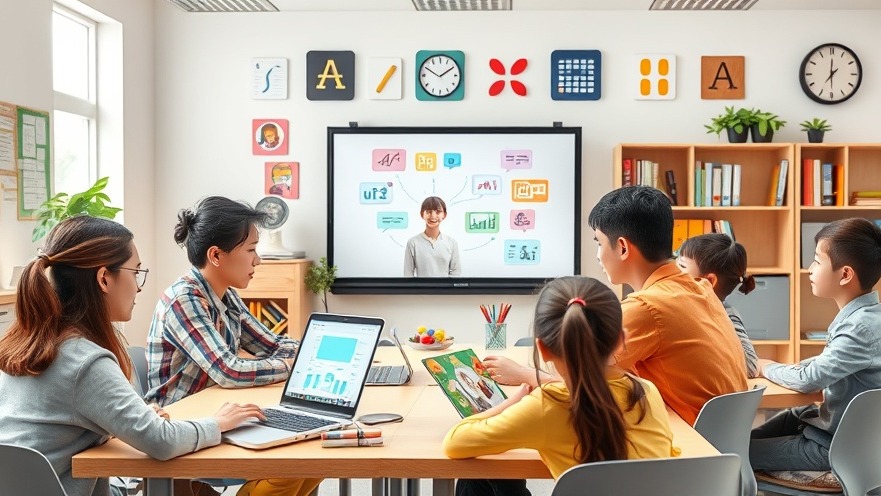
Understanding the Role of AI in Education
As the landscape of education transforms with the rapid incorporation of artificial intelligence (AI), educators and students alike must navigate the delicate balance between leveraging technology and maintaining critical thinking. At the forefront of this discussion is a crucial question: is AI assisting our thinking, or are we outsourcing it? Generative AI models, like ChatGPT and Google's Gemini, showcase unprecedented abilities to mimic human cognition, but this capability brings both challenges and opportunities.
Is AI Enhancing or Replacing Cognitive Work?
The impetus behind using AI falls heavily on our intentions. When utilized for tasks like clarifying ideas and refining arguments, AI can serve as a powerful ally in educational settings. However, when students begin to depend on AI to perform their thinking tasks entirely—writing essays or generating arguments—the learning process suffers. We must foster an understanding that AI should augment our cognitive abilities, not replace them.
Recognizing the Risks of Over-Reliance
Researchers like Gerlich (2025) have raised sobering concerns about the potential dangers of over-reliance on these technologies. Impact on critical thinking, creativity, and overall educational growth loom as significant issues. There's a risk of students becoming passive recipients of information rather than active thinkers if they lean too heavily on AI tools.
Adapting to AI Like Past Technologies
Historically, advancements such as calculators and spellcheckers prompted shifts in teaching methods, yet the current AI paradigm offers something more profound—tools that potentially think. Previous experiences teach us adaptation is key; however, the nuances of integrating AI into learning environments require deeper critical awareness. It's imperative that teachers guide students in using AI responsibly and intelligently.
Co-Intelligence: The New Collaboration
Ethan Mollick (2024) describes a concept called 'co-intelligence'—a symbiotic relationship between humans and AI that could redefine the educational process. This collaboration encourages students to engage partner-like with AI, blending their insights and creativity with machine-assisted analysis. Educators should cultivate this mindset to ensure students not only use these tools effectively but also develop their cognitive skills further.
Moving Forward with Awareness
The challenge ahead is twofold: educating students on the responsible use of AI while also empowering them to maintain their learning rigor. As discussions surrounding personal accountability in this AI-driven world unfold, the development of policy insights will play a crucial role in shaping a future where technology complements rather than overtakes human intellect.
Reflecting on these conversations today opens up possibilities for educators, parents, and students to innovate within their daily practices. Let’s take this opportunity to engage in meaningful discussions about how to coexist with technology, ensuring that we teach our students not just to use tools, but to think critically and creatively alongside them.
 Add Row
Add Row  Add
Add 




 Add Row
Add Row  Add
Add 

Write A Comment